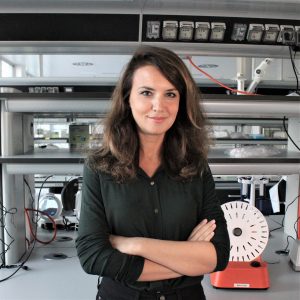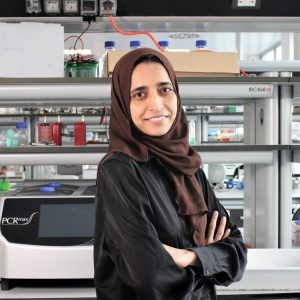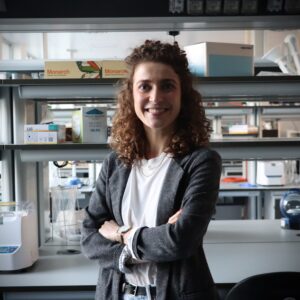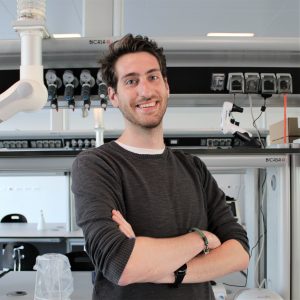
Pigino Group
Cells need to be able to sense different types of signals, such as chemical and mechanical signals, from the extracellular environment to properly function. Most eukaryotic cells perform these functions through a specialized hair-like organelle, the cilium, that extends from the cell body as a sort of antenna. The signaling and sensory functions of cilia are fundamental already during the early stages of embryo development, when cilia coordinate the establishment of the internal left/right asymmetry typical of the vertebrate body. Later, cilia continue to be required for the correct development and function of specific tissues and organs, such as brain, heart, kidney, liver, and pancreas. Sensory cilia eventually allow us to sense the environment that surrounds us, for instance we see through the connecting cilium of photoreceptors in our retina, we smell through the sensory cilia at the tip of our olfactory neurons, and we hear thanks to the kinocilium of our sensory hair cells. Motile cilia, which themselves have sensory functions, also work as propeller-like extensions that allow us to breath, because they keep our lungs clean, to reproduce, because they propel sperm cells, and even to properly reason, because they contribute to the flow of cerebrospinal fluid in our brain ventricles. Not surprisingly, defects in the assembly and function of these tiny organelles result in devastating pathologies, which are collectively known as ciliopathies. Thus, proper function of cilia is fundamental for human health.
The Pigino Lab investigates the biology and the 3D molecular structure of ciliary components in their native cellular context and in isolation, to understand how they orchestrate cilia-specific functions. Our work positions itself right at the interface between structural biology and molecular cell biology. Hence, we combine the latest tools and methodologies from both fields, from cryo-electron tomography, over correlative light and fluorescence microscopy (CLEM), to in vitro reconstituted dynamic systems, genetics, biochemistry, image analysis methods, all the way to more classical cell biology.
Our ultimate goal is to understand the underlying molecular mechanisms of ciliary functions and dysfunctions, so that possible therapeutic strategies for ciliopathies can be developed.

ERC funded project (ERC-2018-COG N#819826 CiliaTubulinCode)
Self-organization of the cilium: the role of the tubulin code
Our current knowledge of the basic principles which lead to self-organization of cellular organelles is quite limited. Hence, our project aims at understanding the role of the tubulin code for self-organization of complex microtubule based cellular structures, with the focus on the structure of the cilium.
Group members
-
 Gaia Pigino
Gaia Pigino
Associate Head of Structural Biology Research Centre -
 Gonzalo Alvarez Viar
Gonzalo Alvarez Viar
Postdoc -
 Paola Capasso
Paola Capasso
Senior Technician -
 Rubina Dad
Rubina Dad
Postdoc -
 Helen Elizabeth Foster
Helen Elizabeth Foster
Postdoc -
 Malina Karen Iwanski
Malina Karen Iwanski
Postdoc -
 Nikolai Klena
Nikolai Klena
Postdoc -
 Samuel Edward Lacey
Samuel Edward Lacey
Postdoc -
 Giovanni Maltinti
Giovanni Maltinti
PhD Student -
 Adrian Pascal Nievergelt
Adrian Pascal Nievergelt
Scientific Visitor
Publications
-
08/2021 - Journal of Cell Science
In vivo imaging shows continued association of several IFT A, B and dynein complexes while IFT trains U-turn at the tip
Flagellar assembly depends on intraflagellar transport (IFT), a bidirectional motility of protein carriers, the IFT trains. The trains are periodic assemblies of IFT-A and IFT-B subcomplexes and the motors kinesin-2 and IFT dynein. At the tip, anterograde trains are remodeled for retrograde IFT, a process that in Chlamydomonas involves kinesin-2 release and train fragmentation. However, […]
-
06/2021 - Journal of Cell Science
The structural basis of intraflagellar transport at a glance
The intraflagellar transport (IFT) system is a remarkable molecular machine used by cells to assemble and maintain the cilium, a long organelle extending from eukaryotic cells that gives rise to motility, sensing and signaling. IFT plays a critical role in building the cilium by shuttling structural components and signaling receptors between the ciliary base and […]
-
05/2021 - Current Biology
Intraflagellar transport
Cells need to be able to sense different types of signals, such as chemical and mechanical stimuli, from the extracellular environment in order to properly function. Most eukaryotic cells sense these signals in part through a specialized hair-like organelle, the cilium, that extends from the cell body as a sort of antenna. The signaling and […]
-
03/2021 - PLoS Genet
Ccdc113/Ccdc96 complex, a novel regulator of ciliary beating that connects radial spoke 3 to dynein g and the nexin link
Ciliary beating requires the coordinated activity of numerous axonemal complexes. The protein composition and role of radial spokes (RS), nexin links (N-DRC) and dyneins (ODAs and IDAs) is well established. However, how information is transmitted from the central apparatus to the RS and across other ciliary structures remains unclear. Here, we identify a complex comprising […]
-
01/2021 - Science
Tubulin glycylation controls axonemal dynein activity, flagellar beat, and male fertility beat, and male fertility
Posttranslational modifications of the microtubule cytoskeleton have emerged as key regulators of cellular functions, and their perturbations have been linked to a growing number of human pathologies. Tubulin glycylation modifies microtubules specifically in cilia and flagella, but its functional and mechanistic roles remain unclear. In this study, we generated a mouse model entirely lacking tubulin […]